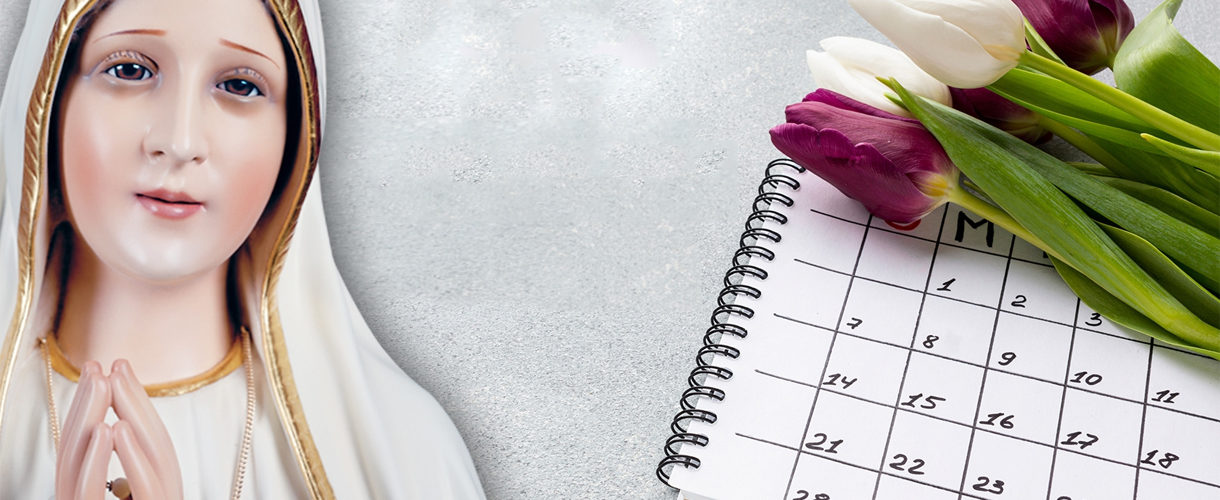
Our Lady Of Copacabana
Country : Bolivia
Year : 1581
Among the passengers of a ship lost in a storm near Rio de Janeiro, were some Brazilian pilgrims returning from a visit to the shrine of the Virgin of Copacabana in Bolivia. They called upon the Virgin to intercede for them, and, they were landed safely on the Brazilian shores. In token of gratitude, they called the spot Copacabana—and it has since become one of the world’s favorite resorts.
In Bolivia, however, the original Copacabana does not suggest gay social life; it spells a wonderful story of faith and love. Enclosed by beautiful sloping mountains overlooking the Mary-blue of Lake Titicaca, lies the tiny cove called Copacabana. The name means “one who looks at the precious stone”, because in the distance, lovely to see, stretches the majestic, ice-capped necklace of the Cordillera of the Andes. In this spot, in the days of the Inca Empire, lived good Indians whose sole duty was to prepare for journeys of worshippers to the Island of the Sun, some miles out on the lake. Copacabana, accordingly, became the center of much Incan activity, for the Incas were fanatic in their visits to the island shrine.
The missionaries who came with the Spanish conquerors naturally planted the cross in all big Inca centers, and a church was built in Copacabana. It was dedicated to St. Ann. However, the Mother of the Blessed Virgin seemed to frown on this honor, for the town soon fell into disrepute, and the Indians moved away until only a few souls remained. Those who stayed believed that if the town were dedicated to some other saint, the town would prosper; but the agreement on the identity of the new patron could never be reached.
In the year 1581, a young Indian lad, Francisco Yupanbi, desired earnestly that his town be dedicated to Our Lady. In secret he started to construct a statue of the Virgin and Child to be presented to the village. For more than a year he labored day and night. When he called in the townspeople to see the result, they laughed at him in scorn, for Francisco knew nothing of art, and his statue proved it. Undaunted, but burning with the desire to complete the task, the youth went off to visit all the great cities of Bolivia in order to study under the masters who were decorating churches and monasteries. Finally after months of disappointments and successes, he finished his labor of love—a Virgin with all of the features of his own race, in her arms an Infant no different than the thousands of Indian babies Francisco had known so well. He called in his teachers and other artists, and they were astonished; he had created a veritable work of art; but for him it was a labor of love, representing his “Little Mother”, the virgin who could save his native town of Copacabana. He hastened with his precious burden to his home; but as he arrived, he was met by a delegation of citizens, who had come to drive him and his silly lump of plaster away. But the Virgin smiled on Francisco; when the box was opened the hostile attitude changed; when they saw the love that had been caught in the face of the Madonna, they welcomed Francisco and his dear burden to the town. The warmth of love engulfed Copacabana, and soon a church was built for the Mother and her Child. Jewels from devout persons far and near poured into the shrine; distant pilgrims came day after day.
Francisco entered a monastery where he died a happy, holy man. Many legends grew up around his statue; it is said that if you look at her and think her beautiful, it is a sign that you are in her favor; if not, your soul is ugly. Many cures and miracles have been attributed to this Virgin, the greatest, that of faith—she stands as a monument of the faith of Francisco Yupanbi and to the faith of the millions of Indians who came after him; of poor and rich, mighty and lowly, who have revered this simple piece of clay that reminds them of their “Mamita”, the little Mother of everyone.



